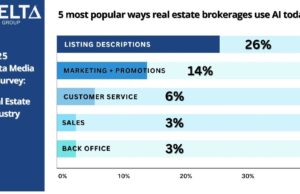U.S. Businesses Invest Trillions in the Future
Annual capital spending by all U.S. nonfarm businesses on structures and equipment varied cyclically, but went from about $1.05 trillion in 1999 to about $1.15 trillion in 2005, according to the Census Bureau’s 2007 Capital Spending Report: U.S. Capital Spending Patterns, 1999-2005 [PDF].
The 2007 report inaugurates a new series of reports that provides historical data on capital spending by U.S. businesses based on the Annual Capital Expenditures Survey (ACES).
Capital spending refers to the purchase or upgrade of structures and equipment that have an expected useful life of more than one year and are usually depreciated.
In 2005, four of the 19 major industry sectors accounted for 49 percent of all structures and equipment spending by U.S. employer businesses — manufacturing (15.5 percent), finance and insurance (15.2 percent), real estate, rental and leasing (9.7 percent) and information (8.6 percent).
Sectors registering the largest increases in investment spending for employer businesses between 1999 and 2005 were mining, up $36.2 billion (118.5 percent); finance and insurance, up $31.5 billion (24.2 percent); and health care and social assistance, up $22.5 billion (43.8 percent). The sectors that experienced the largest declines in investment spending over the same period were information, down $31.6 billion (25.7 percent), and manufacturing, down $31.2 billion (15.9 percent). More than three-quarters of the manufacturing decline came from the durable goods industries.
The 2007 Capital Spending Report traces the changing composition of capital expenditures by major industry sector, and the changing composition of capital expenditures by type of expenditure (structure or equipment) and type of structures (i.e., hotels, offices, commercial buildings) and equipment (i.e., information processing, industrial, transportation).
This report begins with 1999, the year when the data were first collected under the North American Industry Classification System (NAICS), and ends with 2005, the most recent reference year for ACES data. The report is based on approximately 46,000 firms with employees and 15,000 firms without employees.
Changes in Composition of Investment by Type of Investment
- Between 1999 and 2005, total annual spending by U.S. nonfarm businesses on new and used equipment increased from $726.9 billion to $744.4 billion. Total annual spending on new and used structures increased from $320.1 billion to $401.6 billion.
- The composition of investment spending by all nonfarm businesses shifted toward structures after 1999, with the structures share rising significantly in 2002 and holding constant at about 35 percent during 2003-2005.
- The manufacturing share of total U.S. capital spending by U.S. employer businesses decreased every year from 2000 to 2005 — a period during which overall capital spending declined (2001-2003) and then rebounded (2004-2005).
- The share of capital expenditures by all employer businesses accounted for by mining, health care and social assistance, and utilities expanded between 1999 and 2005.
– x –
<!–This is where you place the editors notes. If there are not any notes, deleted the entire tag including the opening and closing
The estimates in this report are based on a stratified random sample of approximately 46,000 companies with employees and approximately 15,000 companies without employees.
Data in the report are subject to sampling variability as well as nonsampling errors. Sources of nonsampling error include errors of response, nonreporting and coverage. More details concerning the ACES survey design, methodology and data limitations are available in the full report, which is available online at <www.census.gov/csd/ace/>.
Contact:
Tom Edwards/Chris Blackburn
Public Information Office
(301) 763-3030/763-3762 (fax)
(301) 457-1037 (TDD)
e-mail: <">>













